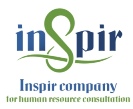Your guide to the stages of the recruitment process in human resources management
The first stage: Recruitment Plan
A strategy that is planned and arranged in advance to be implemented while working on recruitment, where you work It serves as a schedule or time plan for companies and establishments to attract qualified candidates to fill vacant positions without causing any delays or obstacles to the conduct of operational work in the company or facility. The recruitment plan also specifies the goals to be achieved by filling a specific position in the company.
Among its benefits:
✅ Reducing time, effort and cost
✅ Attracting suitable candidates for the organization
✅ Directing resources in the right direction
✅ Make sound employment decisions
The recruitment plan includes:
- Recruitment budget
- Duration of employment
- Channels for publishing job advertisements
- Responsible team
- About managing recruitment operations
- How to get
- On the candidates
- Application mechanism and contact methods
- Methods of advertising job vacancies
- Target area to obtain candidates
- Number of vacancies
The second stage: (job analysis)
It comes after preparing the employment plan and determining the job need
It is a systematic process of collecting and analyzing job-specific data, including characteristics, tasks, and responsibilities, in addition to the qualifications and departments required to fill this job.
Data collection methods for job analysis
- personal interview
- Survey forms and lists
- Direct observation
- Check daily performance records
For more information about job analysis, see the previous article About job analysis
The third stage: Job Description
It is the result of the job analysis process, which is an accurate description of the tasks and duties carried out by the job holder, as well as the required academic and practical qualifications, the powers granted, and also to whom reports are submitted.
The process of preparing job descriptions is essential for companies and institutions in order to attract qualified candidates to fill vacant positions in the company. Among its benefits:
✅ Creating a clear and accurate perception of the requirements and tasks of each job, which helps in the process of selecting candidates.
✅ Show the functional boundaries and powers of each position and prevent their overlap.
✅ Facilitating the recruitment and attraction process for human resources employees
✅ Definition and clarity of career path.
✅ It is used in performance evaluation
The fourth stage: Job advertisement
A professionally designed job ad helps attract a pool of candidates who are a good fit with your company
Top tips for a professional job advertisement
- Use bullet points to divide paragraphs
- The long one makes it easier for me
- Candidates read the job advertisement.
- Use style that reflects your company culture and values to attract the right candidates.
- State the region and location of the job vacancy
- Highlight benefits such as competitive salary, flexible hours or growth opportunities
- Professional.
- Provide clear instructions on how to apply for the job. This includes the application deadline, required documents, and contact information.
- Use clear language to describe the job and the skills and qualifications required
- Clearly state the qualifications and experience required for the job.
The fifth stage: Screening the CVs
Through it, CVs are scanned and suitable candidates who match the job description are selected. The process of identifying a candidate for a job vacancy depends on his educational qualifications, experience and skills.
◀️ The CVs are scanned and sorted either manually or automatically and then a shortlisting is produced. The list contains the best candidates who meet the required and desired criteria for the vacant position.
In screening CVs, one can also rely on CV screening tools that carry out the entire process and are part of the applicant tracking system
Applicant Tracking System (ATS)
The three most common types of resume sorting tools are classified as part of the ATS
Parsers' CV analysis
Resume analysis is the process of extracting candidate data from resumes through keywords. Data such as work experience, education, skills and other required data are extracted and stored in a structured format that facilitates searching and sorting to shortlist.
Resume optimization tools: Resume enrichers
This tool scans the information on a candidate's resume and searches the web to find more information about the candidate. These types of tools go through candidates' social media profiles, their online business profiles, and even their previous jobs to provide better insight into the candidate to recruiters.
AI-powered screening:
It uses artificial intelligence and machine learning algorithms to analyze resumes and identify the most qualified candidates for the job position. Information such as work experience, education, skills and other data are analyzed to identify the best candidates and rank them based on their suitability for the job. These tools can also learn from previous hiring decisions to continually improve the selection process
Sixth stage: Selection process
◀️The selection process in human resources refers to the series of steps an organization takes to evaluate job candidates and select the most suitable candidate for a job position.
The selection process mainly includes:
First: personal interviews
◀️Job interviews are a crucial component of the recruitment process and their primary purpose is to closely judge applicants' suitability for the position
Types of personal interview:
✅Individual interview: which is between the human resources manager and the candidate
✅Remote interview: such as telephone interviews and video interviews
✅Interview with a panel: The interview includes a number of company officials, who take turns asking questions
✅ Group interviews: It includes a group of people selected from among all applicants. They are asked questions and then each candidate is evaluated based on the way he answers.
The importance of personal interviews
- Evaluating the candidate's skills and qualifications and their compatibility with job requirements
- Get more information about the candidate
- Assess the candidate's personality, work style, and communication skills to determine if they are a good fit for the company culture.
- Reduce turnover by ensuring that
- The candidate is a good fit for the job and the company
- Give the candidate an opportunity to ask questions about the company and the job.
- Show the company values to the candidate and attract
- Candidates who share the same values.
Interviews are often conducted by the human resources director, CEO, or administration director who has a job vacancy or specialist to measure the candidate’s suitability in terms of specialty in the job.
Second: Assessment tests
Tools used by companies during the selection process to evaluate a candidate's knowledge, skills, abilities, personality traits, and other characteristics relevant to the job position, and to identify the candidate's strengths and weaknesses.
Some common types of evaluation tests in HR
Integrity tests INTEGRITY TEST
An important test measures the candidate's acceptable behaviors in society
PERSONALITY TEST
A test to determine the candidate's personal and emotional traits
LANGUAGE PROFICIENCY TEST
Measures the candidate's proficiency in the required language
COGNITIVE ABILITY TEST
It measures mental, verbal, numerical, inductive, and problem-solving abilities
Job knowledge test JOB KNOWLEDGE TEST
A test to evaluate technical or professional expertise in specific knowledge areas,
PHYSICAL ABILITY TEST
It is a test specific to jobs that require manual labor or physical skill.
Examples of assessment tests for candidates:
✅Tests provided by the Qiyas Center:
◀️ Cognitive ability test: It is an important test for government administrative jobs, and the pass must be 50 or more, and its validity period is 5 years.
◀️ STEP English Language Test: It measures the candidate’s level of English language proficiency and does not have a passing score, but the higher the test result, the greater the candidate’s chances of acceptance.
✅SHL Tests:
A wide range of psychometric tests and talent measurement solutions for recruitment and talent management processes.
Examples of testing are available on the SHL website:
✅TalentQ tests:
Online tests to measure cognitive abilities, personality traits, and behavior patterns.
You can try the test for free through the link:
https://practiceaptitudetests.com/testing-publishers/talent-q/
Third: Medical examination:
It is the final stage of the selection process. The medical examination aims to ensure that the candidates have good health and the appropriate physical and mental ability to perform the tasks required in the job, by specialized medical bodies such as hospitals and specialized doctors.
The most important of these tests:
✅ Comprehensive blood analysis
✅ Chronic disease screening
✅ Heart and chest examinations
✅ Screening for infectious diseases and digestive system problems
✅ Hearing and vision examinations
Some jobs require drug analysis to detect any narcotic substances in the candidate's body.
The seventh stage: Job Offer:
It is an offer presented to the employee after passing through previous evaluation stages that demonstrated the candidate’s suitability and suitability for the vacant position.
A formal job offer usually contains most of the basic details about the new employee's job, such as:
✅ company information.
✅Job title.
✅ And job description.
✅Salary and benefits.
✅ working hours
✅Duration of the offer.
◀️At the end of the offer, an acknowledgment of the candidate’s acceptance of the job offer must be signed if he agrees to the details contained in the offer.
The eighth stage: Appointment
The final stage in the recruitment process,
It is the appointment of the candidate based on his passing the selection stages during the recruitment process and his suitability for the job vacancy.
It is important at this stage to prepare an Employees On-boarding program for new employees
Which aims to integrate employees into the work environment and maintain them. It will be addressed in future tweets, God willing.
In conclusion
In this article, we mentioned the stages of the recruitment process, which consist of a series of stages:
1- Preparing a recruitment plan
2- Job Analysis
3- Job Description
4- Job Advertisement
5- Screening CVs
6- Selection, which includes (personal interviews, evaluation tests, medical examination)
7- Job Offer
8- Appointment, which includes the Employees On-boarding program for new employees
You can request advice from Inspire specialists on everything related to recruitment and employment through the link:
Or by contacting the unified number below:




